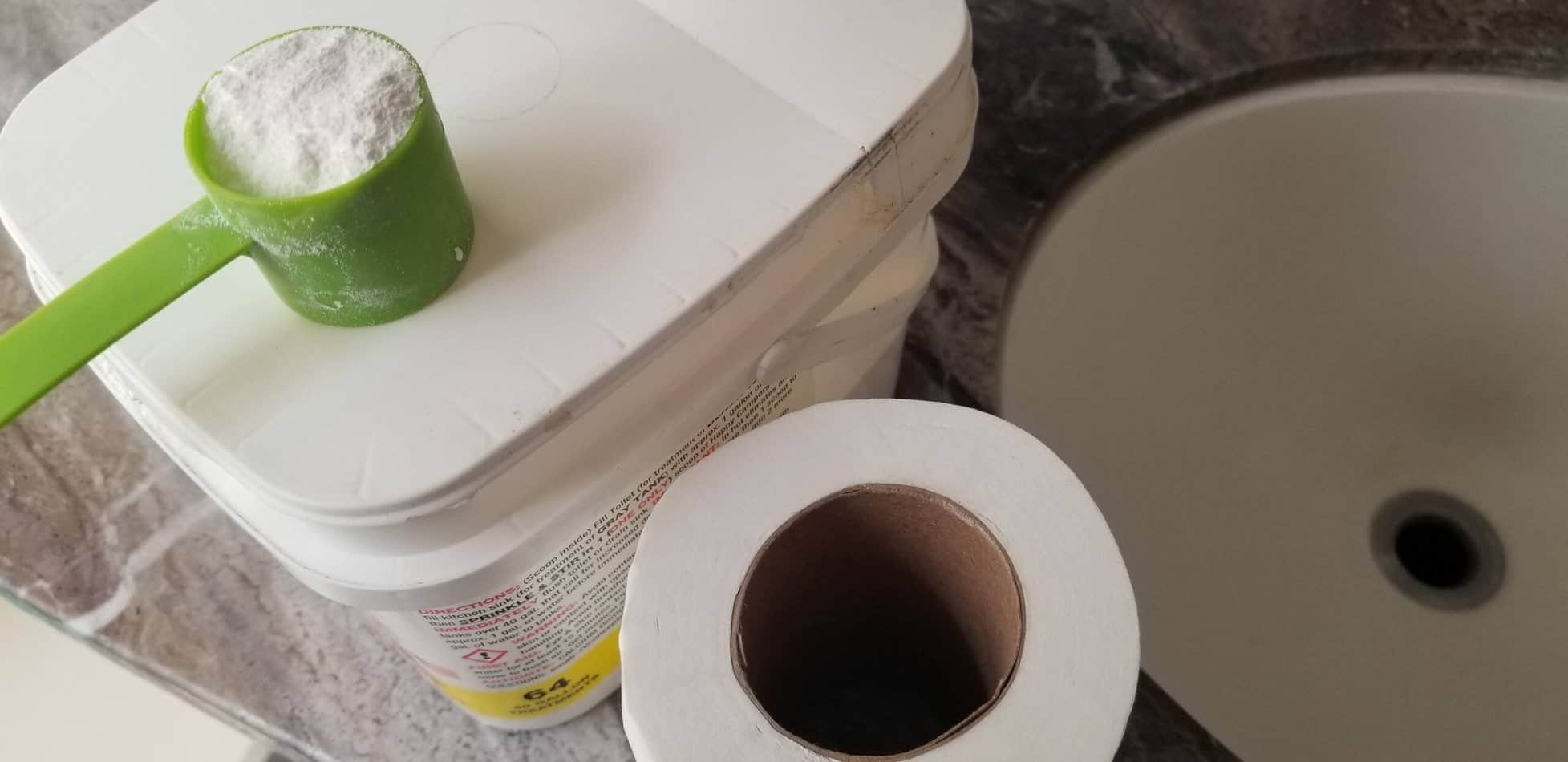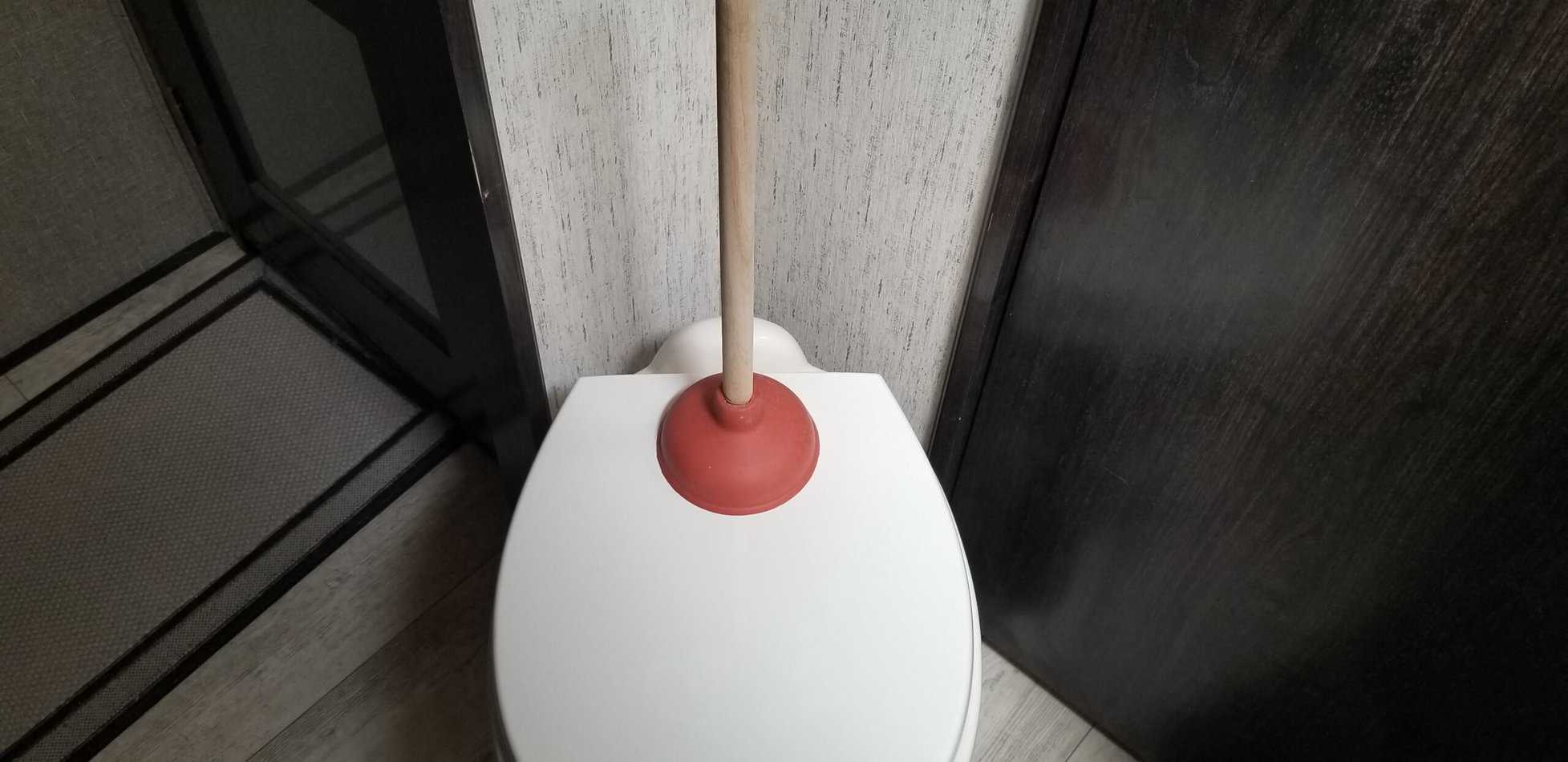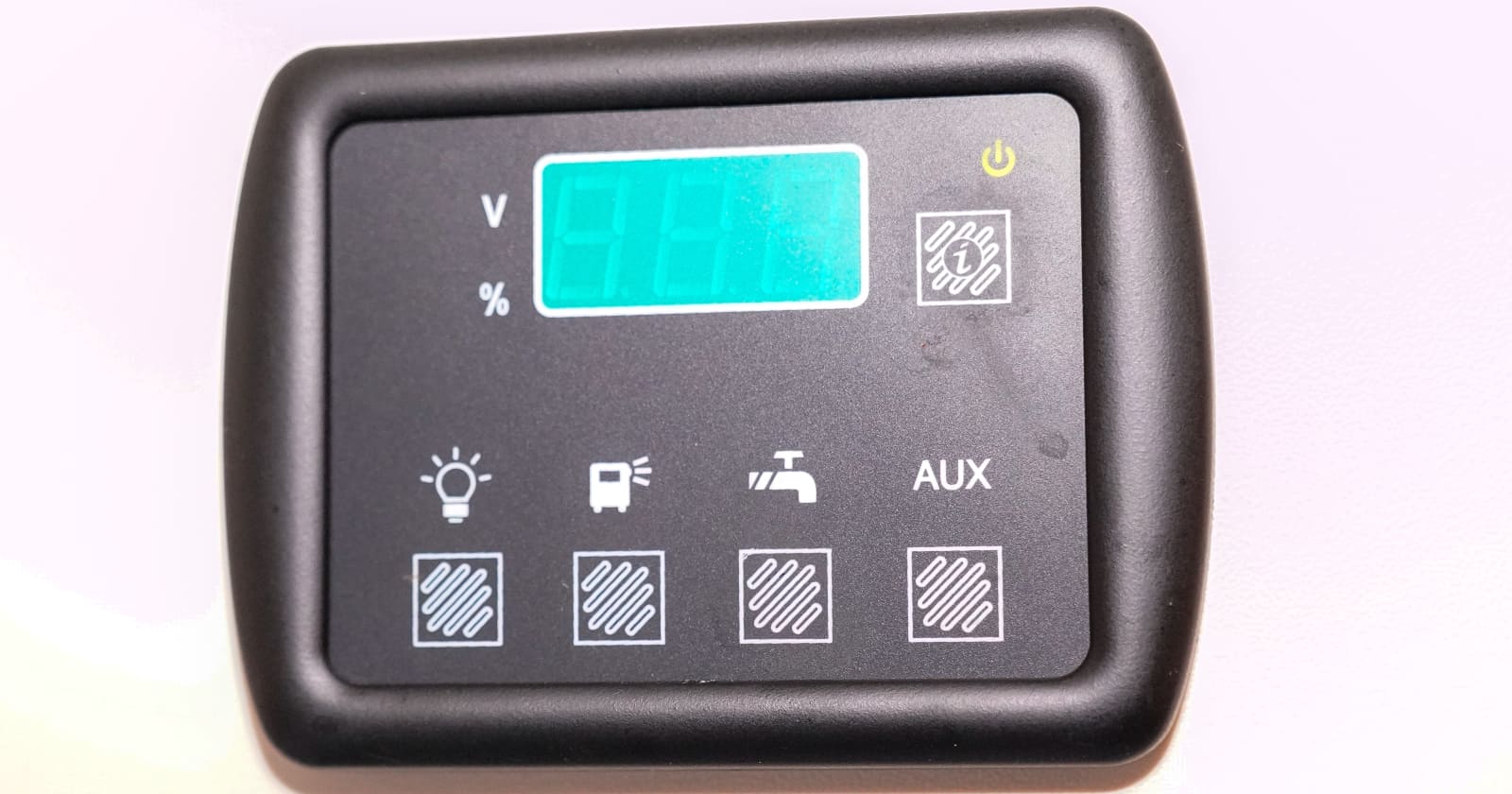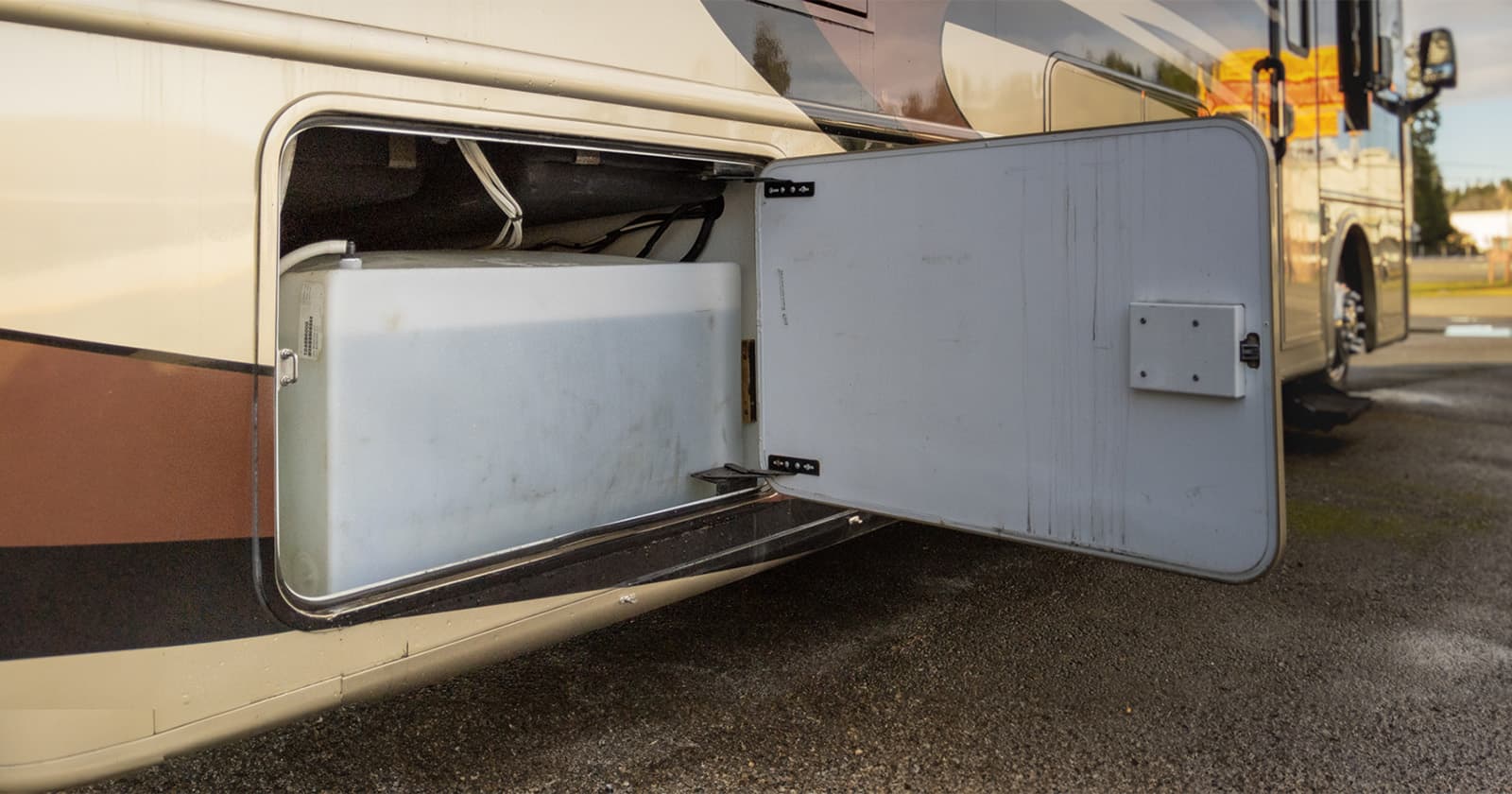Knowing When Your Black Tank is Clogged
If you know your rig well, you have a general idea of how long it takes to drain the tanks. It takes about three minutes of good drain time to empty our black tank. We use a clear sewer connector with clear 45° elbows between the hose and the rig’s outlets. This allows us to see fluid movement, detect any stops, and perhaps see a physical block. When a blockage does happen, it’s important to know a few tricks on how to unclog an RV black tank.

On two occasions, we had a clog. The clog wasn’t “in the tank,” per se, but somewhere between the tank’s outlet and the drop into the campground sewer system. This could be in the hose or anywhere between. Nine times out of ten, the clog will be from toilet paper. Avoid “quilted” toilet paper and instead opt for thinner products. You might need to use a little more, but the thinner paper breaks down faster.
A Healthy Black Tank is a Happy Black Tank
“An ounce of prevention is worth a pound of cure” is a cliché, but clichés exist because they’re usually true. You may never have to worry about how to unclog an RV black tank if you can prevent the clog from happening. There are a number of products you can add to your rig’s sewer tank to accelerate material breakdown. The toilet treatment we use requires a single scoop of powder. Mix with water and flush it down. Typically, it’s one gallon of water to one pre-measured scoop of chemicals.
Other preventative substances can be useful, such as dish soap. These are already formulated to break down grease and dirt and can be a clog prevention method. In the case of a toilet paper clog, having something slick like dish soap can “help the medicine go down” much easier, reducing resistance and friction. Unfortunately, the twists and turns of clear elbows can impede drain progress.

Generally, choose a single product to add to your tank. With the myriad of chemicals involved in today’s manufacturing processes, you don’t want to mix two or more products and cause unwanted chemical reactions. In addition, never leave your black tank drain valves open all the time. Water is your best friend for draining the tank. Avoid the “poop pyramid” at the bottom of the toilet drain by ensuring there is sufficient liquid to provide a “slurry” of waste, as opposed to a “pile” of waste. Flowable liquids don’t clog pipes – dry things do.
How To Unclog An RV Black Tank With Water
Many RVs have a black tank flush inlet that runs water directly into the black tank. While the water itself is additional liquid to help smooth the transition of waste through the outlets and via the hose, the water also serves another purpose: additional weight. For easy clogs, the added weight of the water will be enough to push the matter down and through the hose. If you have some movement of the materials but not a complete voiding, the water can “eat” through and create larger gaps, therefore greater movement, eventually eroding away the clog just like icebergs and rivers change the course of a canyon over time.

A note of caution: When adding water to your tank, always set a timer. When I flush our black tanks, I turn the water to the tank flush, close the valve, and immediately start a timer on my phone. Depending on the water pressure and whether I’ve already done a drain run on it, this timer will be between 10 and 13 minutes. While it runs, I do other things. I never want to forget I’m adding water to the blank tank causing a flood of nastiness inside the rig. No matter what I’m doing, when the timer goes off, I drop everything and pull the valve.
Unclog Your RV Black Tank With a Plunger
The one time we did have a clog, this was what worked for us. Be sure the valves are open, allowing waste to flow out to the sewer system. Typically, a plunger requires water to work, but in this case just moving the air back and forth with the seal the plunger supplies was sufficient to break up the clog. The sound changed, and an immediate look out of the window to the sewer elbow showed me things were moving again.

Bonus Tip: The plunger can work well on a clogged shower drain!
Boiling Water
Heat can help destroy a blockage, too. Pouring boiling water into your black tank can help start a breakdown and loosening of materials and be a flowing substance added from a great height (since the tanks are always beneath your feet). It might not be the final solution to your problem, and depending on the reason for the clog, cold water might work just as well.
Chemicals – Be Careful
Your blank tank is an “ecosystem” of sorts. There are enzymes and bacteria that co-exist to keep things moving. Adding commercial drainage products can harm or destroy that biological balance. Your tanks could be made of a variety of materials that could be damaged by harsh chemicals, too. There are also rubber seals to consider – non-organic chemicals could begin to break down these items.
If you decide to add a chemical, try to opt for organic or bio-safe enzyme-based treatments. Remember, once you get the drain unclogged, it eventually ends back in nature. Many RV campgrounds have septic systems, and those same chemicals that are bad for your black tank’s ecosystem are also harmful to the septic tank.
Bonus tip: Drain chemicals can create gases as they break down waste. When you step on the flush pedal, be sure to keep the toilet lid closed and your face well back to avoid a system “burp.”
An Additional Method to Unclog an RV Black Tank
Conclusion
With the above tips on how to unclog an RV black tank, your RV can stay regular on the road. If there’s one thing about RVers, it’s that they are always up for a bit of sewer talk and love to share their favorite RV tips in places like iRV2 Forums. It’s an excellent resource to ask others how they’ve dealt with their RVing issues, their favorite gadgets, or talk about everything RVing. So check them out, and join the community.





DO NOT set a timer and do something else. Stay there, next to the toilet, and supervise. The downside of forgetting or losing track of time is a thousand times worse than wasting ten minutes of your life. Read a book or surf the web, but DON’T go away.
poor advice
Great article
Real smart!
That’s a great idea. I hope I remember it if I ever need it. Thanks.
Good advice! I thought I knew my s***!
if you are in transit and suspect you have a clog or about to have a clog, dump a bag of ice down the toilet. The ice jostling around in the tank will break up a clog if you are moving. Use the brake a few times to move the ice around.
A large package of ice cubes in the black tank as you are driving will also loosen any buildup on the tank and also as it melts it aids the flow out the pipe.
What’s the best stuff to use in the toilet for stinkiness? It’s not clogged but when I flush it’s gross and I feel like getting sick. Suggestions….?
This article may have some ideas for black tank smells. 🙂
Timers are ok but water pressure varies. A hose gauge shows you exactly how many gallons are entering your tank from the flush out or sani rinse port.
brad
when using full hookup you need to leave the black tank valve closed until its 3/4 full before you dump it so stuff does not pile up and then flow to block the out let
A plunger on an RV toilet won’t do much good. There isn’t a p trap type water bend like at home to clear the clog in the bend.
The RV black tank (all of them) have a tank vent stack going to top if RV to vent pressure build up, to vent smells to the outside.
A plunger will never put pressure in the tank or outlet because the vent stack stops that from happening by design. The best way to evacuate the black tank and avoid clog buildup is water, water, water. Add water to tank before dumping tank. Have tank level st 3/4 or above. You can even add water up to bottom of toilet flap then pull dump valve.
Refill tank again about 1/2 full and dump again.
Then always keep water in your black tank to keep any solids or minerals from drying. Put in whatever RV tank treatment. Not only does this control smells, it is actually good bacteria that breaks down waste and controls stagnant foul smelling water.
Stand right there by the valve and don’t move, don’t talk on phone or surf the web. Don’t rely on a timer. Stay aware and on task.
It only takes one time to flood your camper with more than clear water!
You can find an inexpensive digital device on line that goes on the end of the hose and threads into the fill inlet. It measures the amount of water flowing through the filler hose. I can’t remember the brand and the rig in storage.
Has anyone here actually flooded the inside of their rig? One time I got side tracked while filling the black tank via the black tank flush port and the water actually flows out of the vent on the roof. Not saying that was great, but better than spilling in the coach.
We had a total black tank blockage on our fifthwheel. While it wasn’t something we all consider, the design of the RVs drains was terrible, with 5- 90° bends to the black tank valve, so no way possible to get a eel there to the tank opening. We tried the tank flush, only to fill up the tank totally. No chemicals or hot water could get to the blockage, and the tank was full so any chemicals were to dilute to affect the block.
Eventually we did get the blockage out, mostly just with the good old plunger, but it took many hours of frustration. And no one wanted to work on the problem for us.
Figured our biggest issue started with not putting enough water in the black tank when starting out. Put in at least 4-5 gallons. Sure you say this uses up some of your capacity, but if you don’t, you end up with the pile right below your toilet, with the TP and poop making a nice paper mache pile. When it came off the bottom of the tank, it made a nice plug over the opening.
When leaving a campsite I don’t drain my black tank nor my gray tank, I wait until I get checked into the next campground. That’s when I connect my sewer hose and drain my black tank followed by my gray tank. All that sloshing around while traveling down the road helps break up any potential problems in either tank.